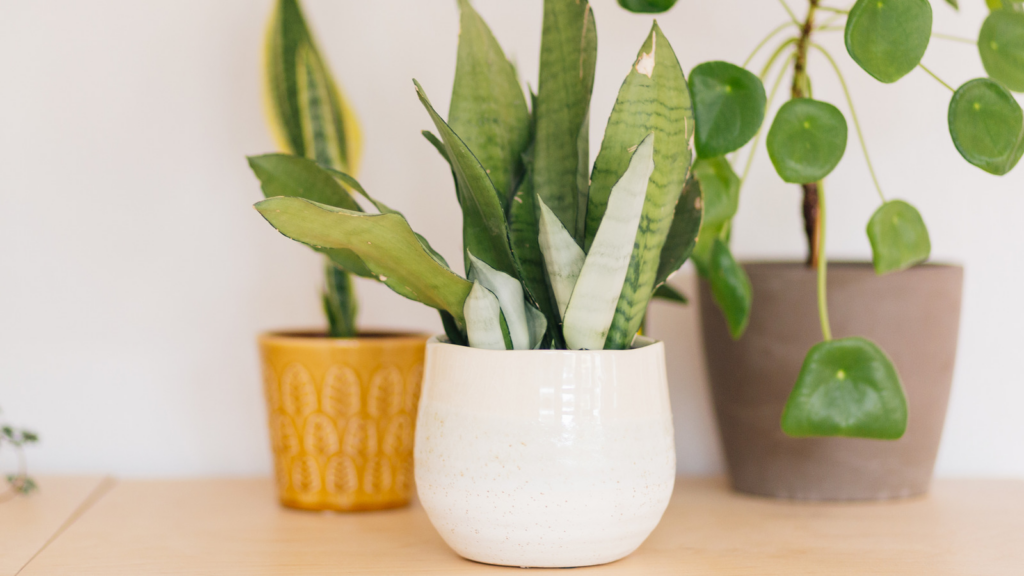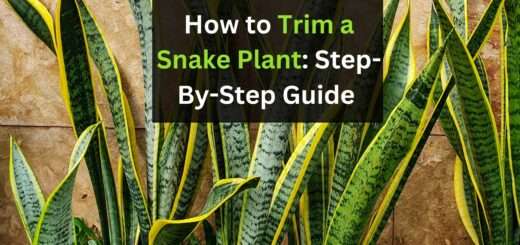Moonshine Snake Plant: Ways to Grow and care Snake Plant in your Garden
Yes, I do have a moonshine snake plant, but I don’t know why the hell it’s getting darker. I was digging to find the reason and a solution to restore its light green color. Interestingly, I found a solution that I applied, and now my plant is glowing again.
Don’t worry, I will not keep the curing solution to myself. Here, I’ve explained everything about moonshine snake plants, including how to care for, propagate, pot, repot, and common problems you may face while growing moonshine snake plants, so that you don’t have to struggle to find solutions. What are you waiting for? Let’s grow moonshine snake plants in the best way possible.
Quick takeaways:
- They are popular because of being Hardy, low-maintenance, and stylish.
- You can also plant them in offices lobbies stores and homes.
- Other snake plant types are well recognizable such as Dracaena trifasciata, and Dracaena trifasciata ‘Laurentii’ but the Moon Shines neck plant is less popular and now gaining more popularity.
- They do have upright growing habits with thin broad leaves which are pale silvery green in color.
- They are easy to grow and care which makes them perfect for beginners.
- if you have Children and pets in your house you need to keep them away from the plant because they are considered mildly toxic To the pets and humans when ingested.
Moonshine Snake Plant Overview:
| Common name | Moonshine snake plant |
| Botanical Name | Dracaena trifasciata ‘Moonshine’ (formerly Sansevieria trifasciata ‘Moonshine’) |
| Family | Asparagaceae |
| Plant Type | Perennial, succulent |
| Mature Size | 4 ft. tall |
| Sun Exposure | Partial |
| Soil Type | Sandy, well-draining |
| Soil pH | Acidic |
| Bloom Time | Spring, summer |
| Flower Color | Green, white |
| Hardiness Zones | 10-11, USDA |
| Native Area | Africa |
| Toxicity | Toxic to animals, toxic to humans |
Moonshine Snake Plant Care:
Deciding to add houseplants and then growing snake plants is the easiest to grow and care for plants. Here I have explained about the moonshine snake plant that can tolerate to grow in different growing conditions and is best known as a hardy and drought-tolerant plant. They come in the category of succulents because of their water storage capabilities. When compared to other succulent plants they are relatively slow-growing houseplants. Although it is rare chances of find snake plants to flower indoors but it is possible if you provide them right conditions that make them to grow with long, thin stems with fragrant, sweet-smelling flowers that last from 2 to 3 weeks. The following are some basic requirements for growing moonshine snake plant:
Light:
- The moonshine snake plants use to grow in a range of lighting conditions such as from low light to direct sun.
- If you grow them indoors you need to give them bright to medium indirect light.
- The plants can survive in low light conditions but also remember they will not grow as quickly as other plants and will grow into leggy growth over some time.

Soil:
- You need to provide the moonshine snake plants with soil that needs to be porous and well-draining which keeps the excess of water away from the roots of the plant.
- To grow the plant you need to provide them with cactus or succulent soil mix which will be a great choice for them or you can also choose to make your own soil mix by combining equal parts of potting soil, perlite, and sand.

Water:
- Make use to dry the soil between watering.
- The moonshine snake plant is drought-tolerant and when overwatered there it grows in root rot conditions.
- However, the amount of water to provide the plant depends on how much light you provide them.
- In case providing the plant with several hours of bright, indirect light then you need to water the plant more frequently and in low light conditions the amount of watering the plant will be reduced.
- The conditions of watering also depend on the temperature and humidity the plant is getting to leave.
- I will suggest you test the soil moisture using your finger or use a moisture meter between watering that will help to determine the amount of water required by the plant or you can also try to maintain the regular watering schedule.
- It is good to underwater the moonshine snake plants rather than overwatering them.
Temperature and Humidity:
- They are used to grow best in warm temperatures and average dry humidity levels.
- You need to avoid the plants by keeping them safe from shock and maintaining temperatures between 55 and 85 degrees Fahrenheit.
- The plant can be used to grow in USDA zones 10 and 11.
- You need to keep the plant indoors during the season of cold fall and winter months.
Fertilizer:
- To help the plant with strong growth you need to fertilize the plant regularly during the spring and summer months.
- You need to feed the plants as they are high feeders so make sure not to forget the occasional feeding of the plant.
- You can use a balanced all-purpose houseplant fertilizer to half-strength and make sure to apply them during watering.
- Make sure not to fertilize the plant in the fall and winter seasons because they go into dormant stages at this time.
Propagating Moonshine Snake Plant:
For propagating a moon Shine snake plant you really need to have patience after that all the steps are easy. the propagating process normally does take several months Having the slow growth of new pups. The following are the steps that will help you to propagate a moonShine snake plant:
- Always use a pair of sharp sterilized pruning shears or scissors for cutting an entire leaf from a matured healthy plant.
- The next step is to cut the leaf into several sections in which each section needs to be three to four inches tall.
- While cutting the leaf make sure to keep track of the top and bottom parts of the section.
- You need to keep each piece in the same vertical orientation because they used to grow in the original plant.
- after cutting the leaf into several pieces the next step is to notch the bottom of each cutting piece which will look like a triangle shape of the bottom part.
- doing this helps in increasing the success rate of propagating the Moon Shine snake plant.
- After notching each leaf piece and next step is to fill the class with fresh room temperature water so that you can place the leaf cutting in the water.
- make sure that the bottom part of the cutting leave is facing downward and is submerged fully in the water.
- Keep the container having the leaf-cutting in a place where it receives Bright indirect light.
- You need to change the water once every one to two weeks to keep the plant fresh.
- The small root growing out of the Cutting will take a couple of months from the bottom of the leaf-cutting.
- In case of notice, the bottom part of the leaf-cutting has started to rot you need to trim the rotted part of the leaf-cutting as soon as possible.
- Once the cutting starts to grow roots they will begin to grow small pups.
- When you find that the root has grown about an inch long you can move the cutting into the soil or you can also wait until the pups are sprouted.
- After the cutting has grown fully you can move it to the soil where you need to prepare a small pot having a Sandy well-draining potting mix in which you can plant the rooted leaf cutting.
- make sure to water the potted cutting well and keep them in a bright location.
- let the soil dry out between the watering schedule and then what are the plants.
- The plant will grow slowly but you can also find the small pups sprouting up and getting matured with time.

Potting and Repotting Moonshine Snake Plant:
- The Moon Shine snake plant needs to be repotted only when the plant has outgrown the container.
- In short, you need to repot the plant once every 2 to 3 years.
- You can also wait until the spring or summer months arrive to repot the plant because the plant is active during this time.
- For selecting a new choose a pot that is only 2 to 3 inches larger than the previous part.
- You need to refresh the soil as much as possible during the repotting period without damaging the root and after that keep the plant in the original location.

Common Pests and Plant Diseases
Keep an eye out for common houseplant pests like mealybugs, spider mites, scales, and aphids. While the moonshine snake plant isn’t particularly prone to any pests or diseases, these houseplant pests will happily take up residence on this plant, particularly if other houseplants nearby are already infested. The main disease to watch out for with this snake plant is root rot, which usually results from overwatering.
Common Problems With Moonshine Snake Plant:
The Moon Shine snake plant doesn’t have much expectation Aldo in most of the parts they grow problem-free but like other plants, you can find a few issues if you are not aware of how to grow the Moon Shine snake plant indoors. Here are Common problems with the moon Shine snake plant that you need to be aware of:
Mushy Stems:
- In the case of finding a mushy stem, it indicates the problem the plant is dealing with from root rot.
- The main cause of Root rot is overwatering but can also happen using soil that is contaminated with fungi.
- To save the plant remove the plant from the pot as soon as possible and cut the leaves and roots that are rotted.
- In case the whole root system rotting you need to save the plant by taking a healthy leaf cutting from the healthy part of the plant and using it for propagating.
Brown Spots:
- Finding brown spots is because of leaf burn, pest infestations, or exposure of the plant to dry air like heat from the vent.
- You need to make sure that the plant doesn’t receive any Harsh direct sunlight throughout the whole day and also check for any pests like spider mites, mealybugs, or scale.
- Make sure the plant is not kept directly next to the heating vent because it will result in drying out the air and will cause brown spots on the leaves of the plant.
Leggy Growth:
- If the plant is growing in thin and legging this means that the sun is not getting enough sunlight.
- Although the plants conserve in low light conditions but grow best in medium to bright indirect light.
- They are actually less tolerant of low light conditions compared to other types of snake plants.
- After finding the legging growth you need to correct the light consumption which will prevent the plant from dealing with the situation in the future.
Conclusion:
So, now you know everything about moonshine snake plants, and make sure if you are growing them in your garden just provide the plant with all growing requirements such as light, water, temperature, fertilizer, humidity, and soil in the right portion that I have explained above.
Further, if you have any issues while growing the plant, just ask me in the comment section below.


